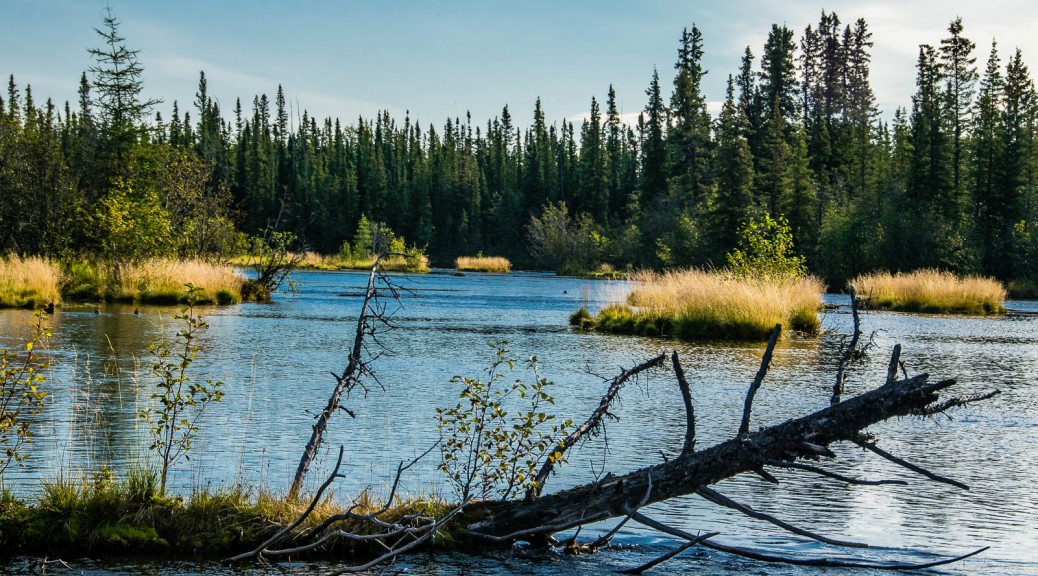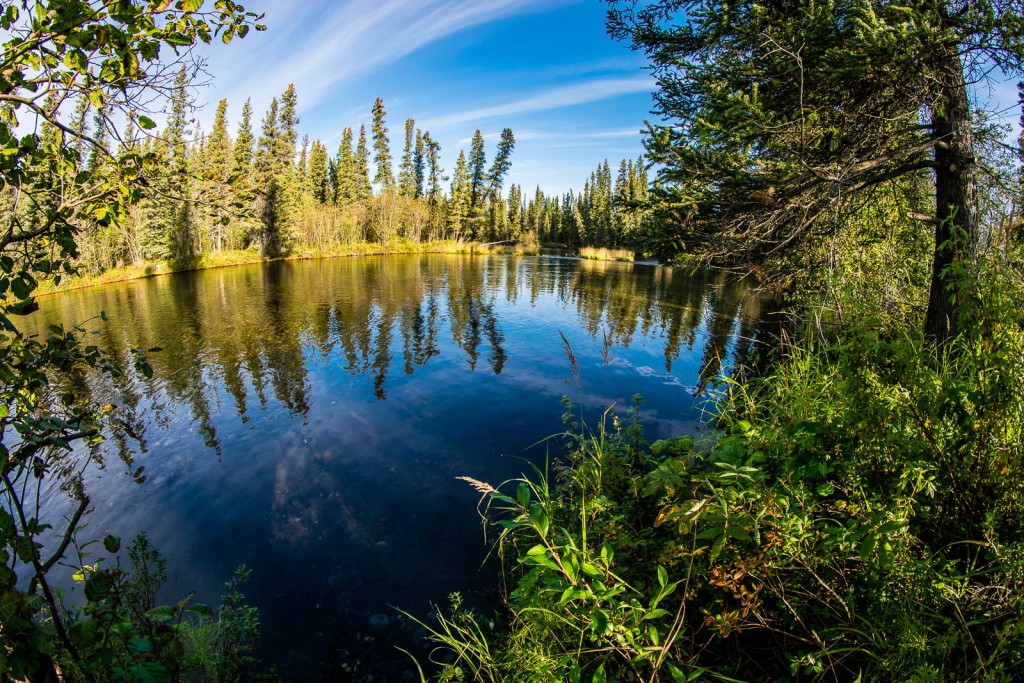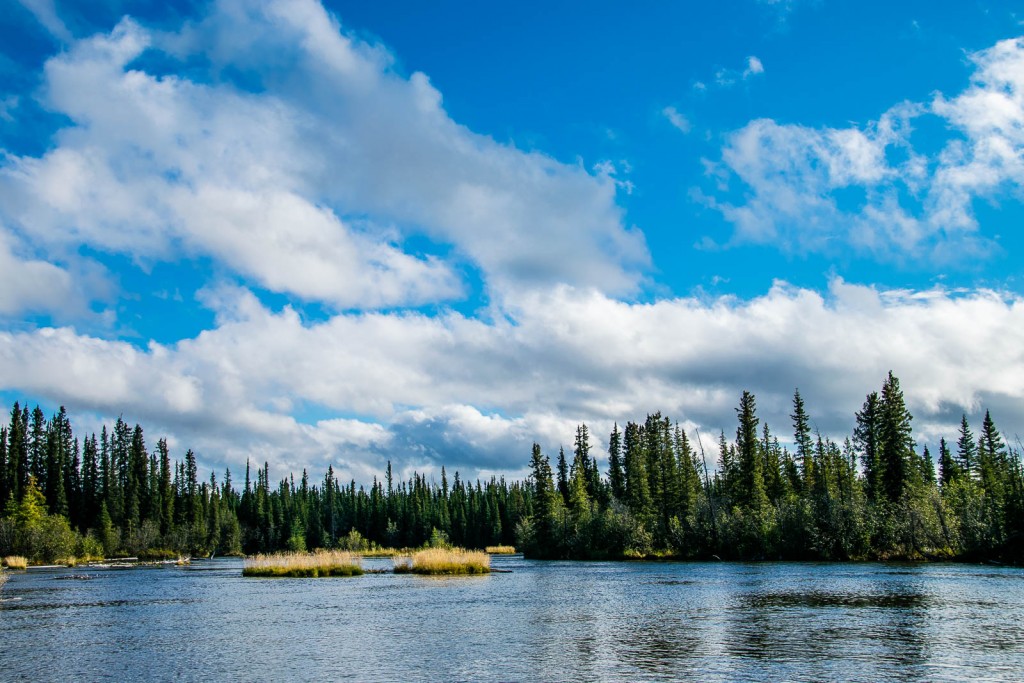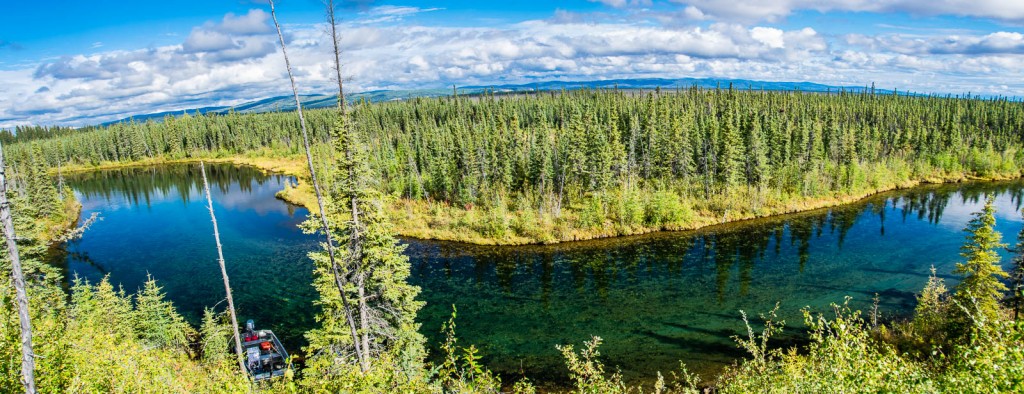From August 23-25, 2014, my dad and I camped out on the Richardson Clearwater to try to collect 3-D video foraging data on adult grayling using the GoPros. We found one of the only good campsites on the river, although it was well hidden.
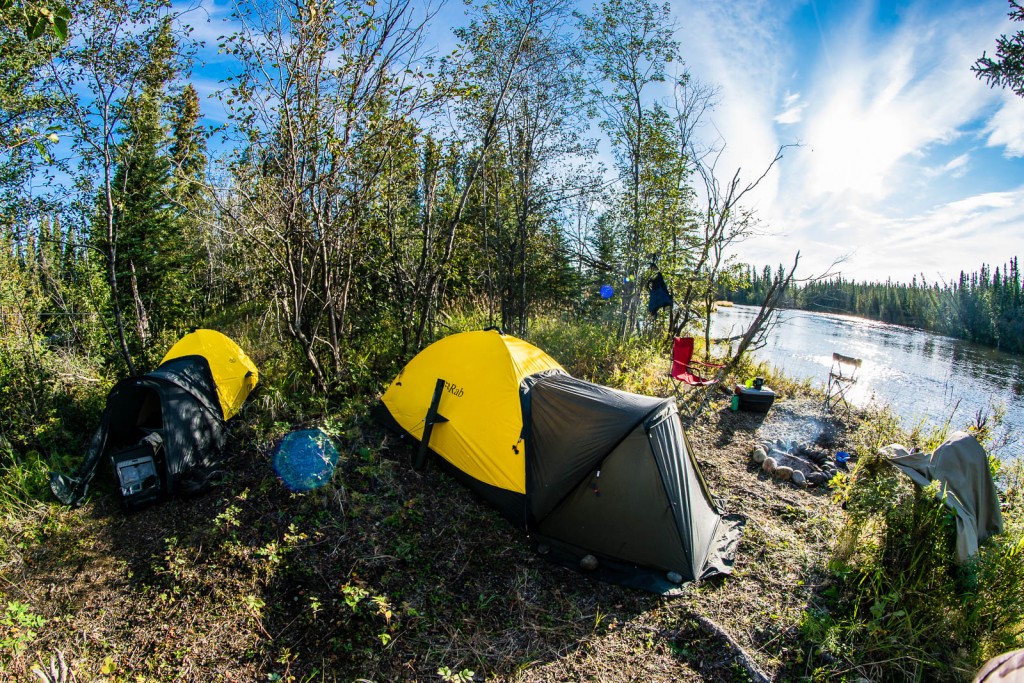 The weather and scenery were amazing the whole time.
The weather and scenery were amazing the whole time.
In addition to filming, we also caught some fish to compare diet samples with the ones we caught a month before.
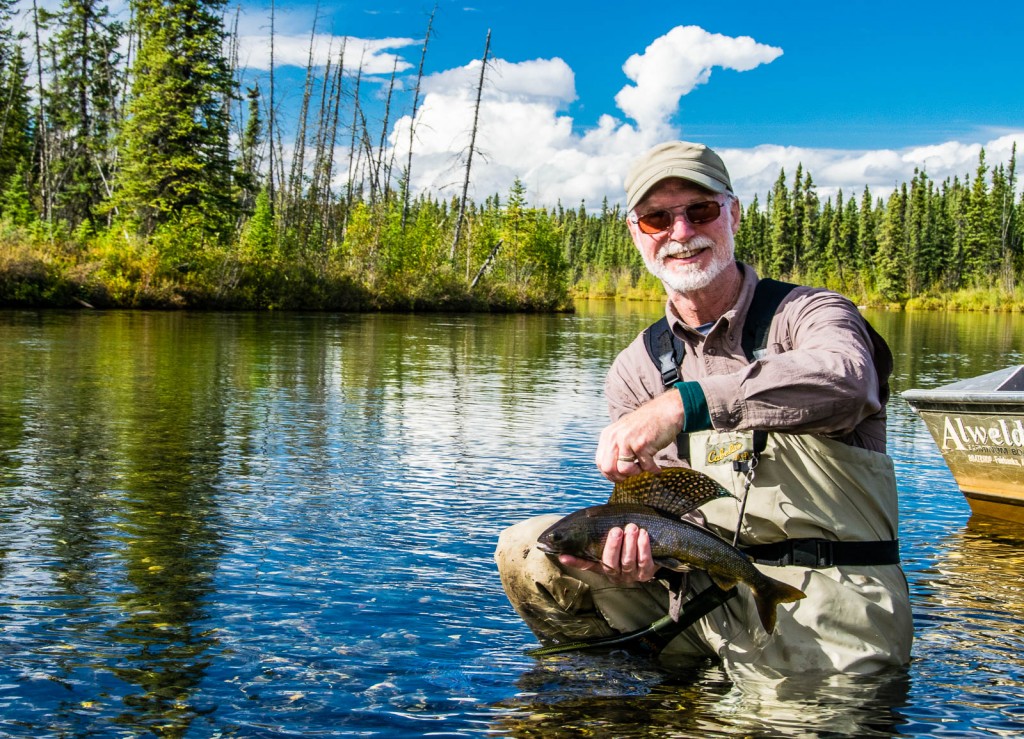 The video we shot of grayling turned out to be disappointing. The fish were mostly in water fast and deep enough that it was difficult to place the cameras nearby. When we did, our presence spooked the fish, and they eventually returned to the general area but not to their specific original positions in front of the cameras. Unlike Chinook salmon I’ve filmed previously with steady success, the grayling in this stream seem to range over an area large and uniform enough that when they’re disturbed they have no strong urge to return to the same spot anytime soon.
The video we shot of grayling turned out to be disappointing. The fish were mostly in water fast and deep enough that it was difficult to place the cameras nearby. When we did, our presence spooked the fish, and they eventually returned to the general area but not to their specific original positions in front of the cameras. Unlike Chinook salmon I’ve filmed previously with steady success, the grayling in this stream seem to range over an area large and uniform enough that when they’re disturbed they have no strong urge to return to the same spot anytime soon.
Although this stymied our efforts to shoot good footage on this trip, it was very valuable going into the off-season before our first real field season. It told us that we need to figure out a way to place the cameras in faster, deeper water than expected (i.e. devise a new anchoring system) and that we need to find a way to keep the cameras running for a very long time, so they’re ready when the fish eventually do return to suitable positions. This is exactly the kind of thing we needed to figure out while we still have the whole winter to engineer our solutions.

